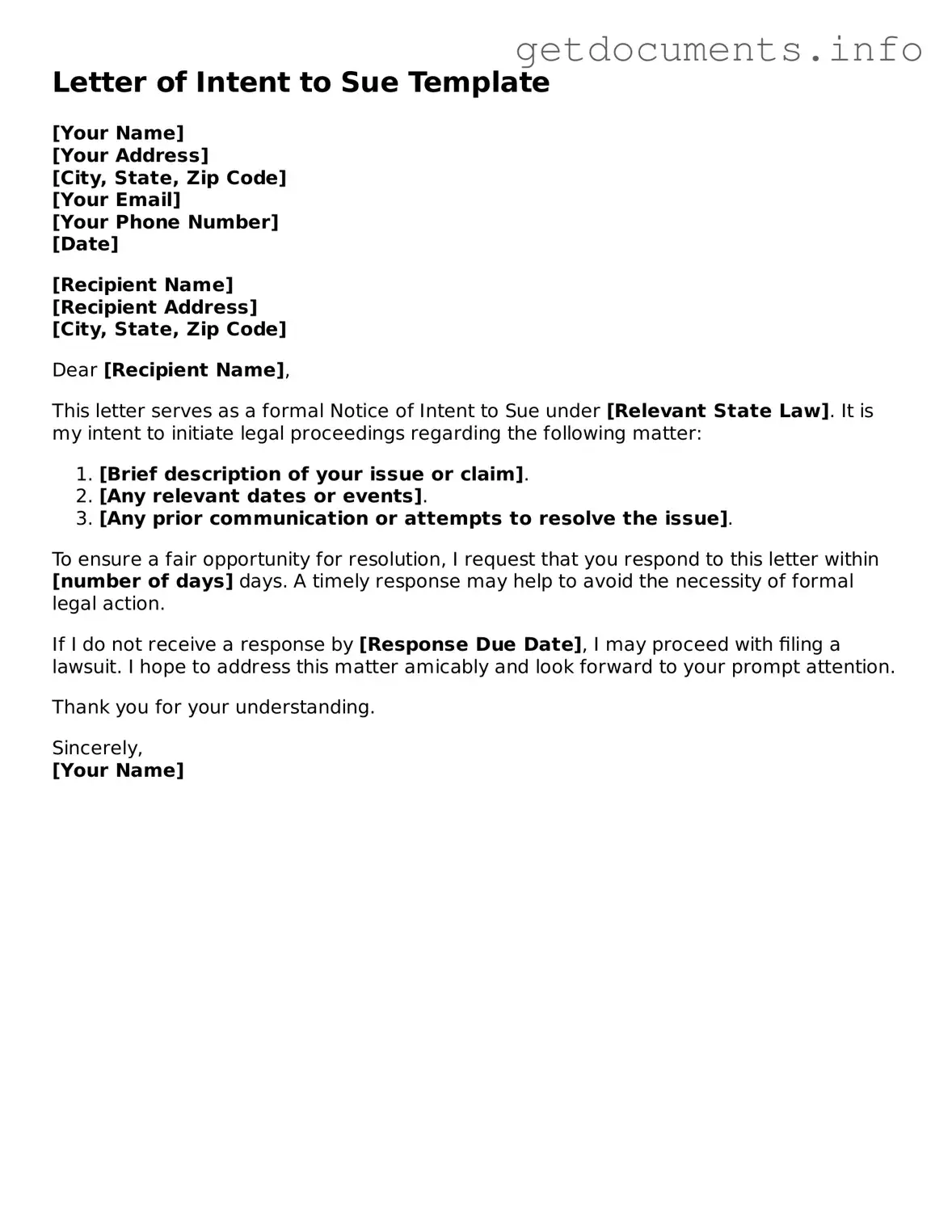The Letter of Intent to Sue form serves as a crucial preliminary step for individuals or entities considering legal action. This document is often used to formally notify the opposing party of a potential lawsuit, outlining the grievances and the underlying issues prompting this course of action. By providing a clear statement of intent, the form sets the stage for negotiations or dispute resolution before escalating to court. It typically includes essential details such as the names of the parties involved, a description of the dispute, and any relevant dates or events leading to the conflict. Additionally, the letter may specify the desired outcome or remedy sought, which can help clarify the expectations of the party intending to sue. Utilizing this form can foster open communication, potentially leading to a resolution without the need for litigation, while also demonstrating a serious commitment to pursuing legal remedies if necessary.
